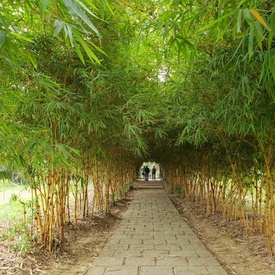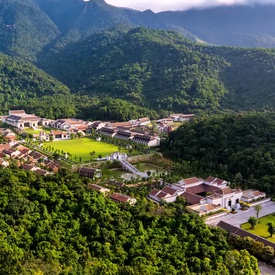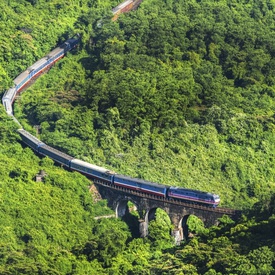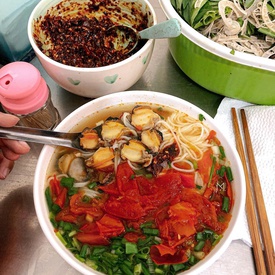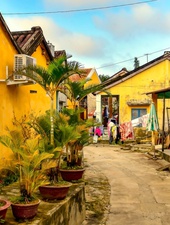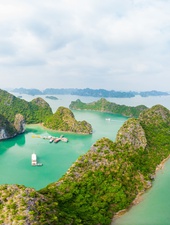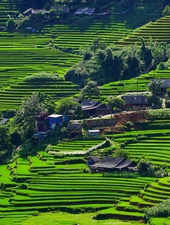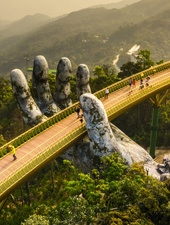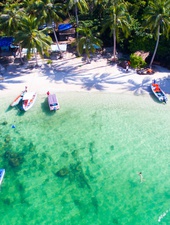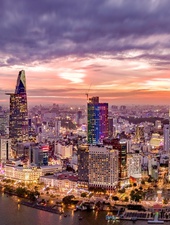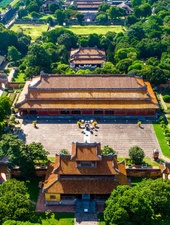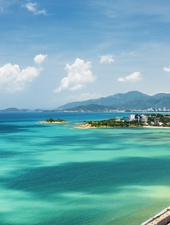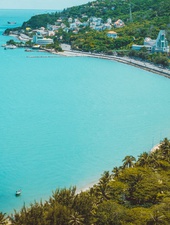Hoa Binh
Cradle of Muong ethnic culture with picturesque landscapes
Located at the gateway to Vietnam's Northwest region, Hoa Binh Province is recognized as one of the nation's oldest areas, boasting the notable “Hoabinhian Culture” (Van Hoa Hoa Binh). In recent years, Hoa Binh has experienced significant growth, emerging as a prominent tourist destination with its rich natural and cultural heritage.
Location and History
Hoa Binh is situated approximately 82 km southwest of Hanoi, bordered by Phu Tho to the north, Ha Nam and Ninh Binh to the south, and Son La and Thanh Hoa to the west. The climate in this area is characteristic of a tropical monsoon, featuring cooler and drier winters, with hot and rainy summers. Annual temperatures typically range from 15 to 29 degrees Celsius, varying with the seasons.
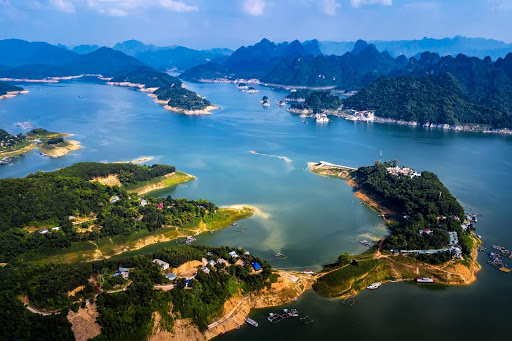 Photo: baovanhoa.vn
Photo: baovanhoa.vn
The province was established on June 22, 1886, initially named “Mường Province,” before being officially renamed Hoa Binh on March 18, 1891, by the French Indochina governors. Over the years, the province has undergone numerous changes, and portions of its land have now become part of Hanoi.
Notably, Hoa Binh is one of the most ancient locales in the world, with evidence of human habitation dating back to 10,000 – 2,000 BCE.
Ecotourism Destination
Despite facing challenges in infrastructure and economic development due to its geographical characteristics, the mountainous terrain of Hoa Binh serves as a natural asset for tourism. The area is adorned with an array of lush green valleys, pristine forests housing numerous rare plant and animal species, as well as enchanting caves and rivers, facilitating a variety of activities including hiking, leisurely walks, hunting excursions, and relaxing in hot springs.
About 30 km from Hoa Binh Town, visitors will find a selection of hotels and inns providing hot spring services along both sides of the road. The region is renowned for its mineral water sourced from the Kim Boi hot spring. The water maintains a natural temperature of approximately 36°C and is celebrated for its therapeutic properties, helping to alleviate conditions like arthritis, gastritis, and hypertension.
Kim Boi hot spring has grown in popularity among domestic tourists.
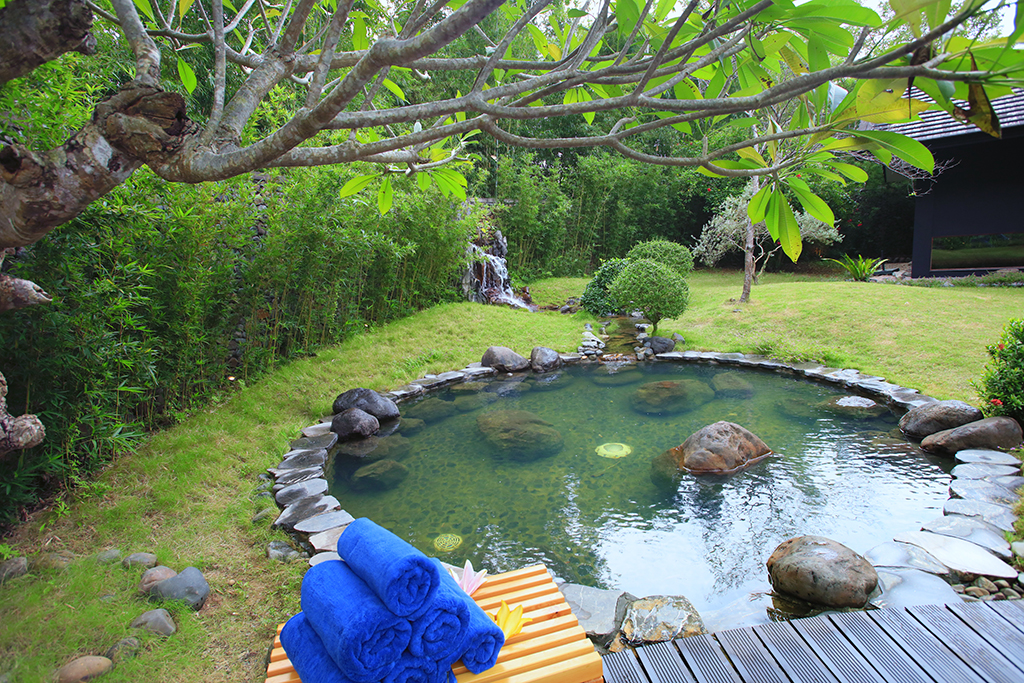 Photo: serena.com.vn
Photo: serena.com.vn
Thung Nai offers another picturesque ecotourism experience, accessible by traversing the enchanting waters of the Da River, where winding currents reveal breathtaking landscapes. It is an ideal destination for those seeking a peaceful retreat with family or friends, far removed from the stresses of everyday life, while enjoying the extraordinary natural beauty. Often likened to “Ha Long Bay on land,” Thung Nai is a hidden gem.
Thung Nai is a prime tourist destination for those seeking tranquil moments.
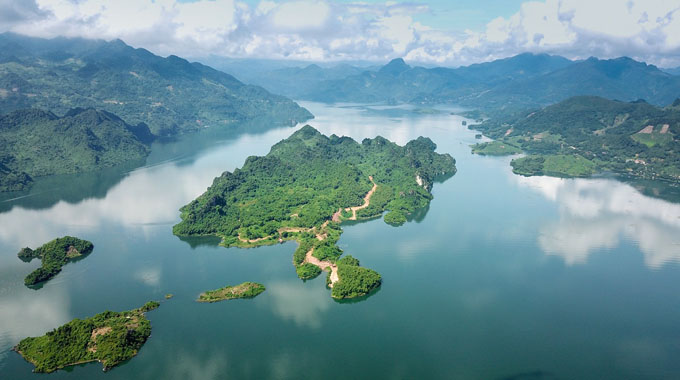
Other ecotourism locations in Hoa Binh include Da Bac and Luong Son Districts, known for their pristine sceneries. However, tourism in these areas has not reached the same level of development as the previously mentioned sites.
Cultural Essence
Rich in history, Hoa Binh is home to a plethora of archaeological and historic relics, proudly preserving 37 national relics and 18 regional sites. The local populace primarily consists of the Muong ethnic group, along with various ethnic minorities, including Thai, Yao, Tay, and Hmong. This diversity significantly enhances the cultural tapestry of the province and aids in the advancement of its tourism sector.
Currently, over 50 ethnic tourism hamlets exist in Hoa Binh, welcoming visitors from both domestic and international locales. Lác Village and Muong Village are the most renowned, having been officially developed for cultural and ecotourism by local authorities. Additionally, visitors are encouraged to explore the Culture Tourism Village in Dong Mo, Son Tay, Hoa Binh, which showcases traditional Vietnamese architecture, aimed at preserving and promoting the richness of Vietnamese culture worldwide.
-hoabinh15.jpg) Photo: maichauhoabinh.com
Photo: maichauhoabinh.com
Visiting Hoa Binh during the Tet Holiday offers opportunities to participate in a variety of festivals organized by local communities across different regions, showcasing distinct ethnic traditions. Notable events include the Chua Tien Festival in Lac Thuy Prefecture, the “Khai Ha” Carnival of the Muong Bi people, and the “Xen Ban Xen Muong” Carnival of the Thai ethnic group.
How to Get There
Hoa Binh Town is easily accessible from Hanoi, located just 82 km away, with options for both road and water transportation. Travelers can take cars or coaches from Hanoi along National Highway No. 6 to reach Hoa Binh Town; alternatively, there are routes via National Highway No. 15 from Thanh Hoa to Mai Chau and National Highway No. 12B from Ninh Binh to Hoa Binh.
| 20°C | ||
| Humidity | 79% | |
| Wind | 3.6 km/h | |
| Sunrise | 23:09 | |
Popular Attractions
Seasonal Guides
Best Of Hoa Binh
See, Eat, Sleep, Shop, Stay - The Best of Hoa Binh
Frequently asked questions
Are there ATMs in Mai Chau?
While ATMs can be found in Mai Chau, their availability is limited and withdrawal amounts may be capped. To ensure a smooth trip, it's best to bring sufficient cash along with you before arriving.
What local foods Mai Chau offers?
In Mai Chau, don't miss out on com lam, or bamboo-tube rice. This unique dish features sticky rice cooked in bamboo tubes with banana leaves and a hint of coconut milk, giving it a delightful sweetness. Be sure to also try ga doi, the local hill chicken, thit xien nuong, which are flavorful grilled pork skewers, and can wine, a traditional local rice wine. These specialties truly capture the essence of the region's cuisine!
Are there any interesting experiences can I try in Mai Chau?
Mai Chau is a true natural paradise where you can unwind and immerse yourself in the stunning landscapes and vibrant culture of the local mountainous communities. To help you plan an unforgettable trip to Mai Chau, consider the following suggestions:
• Cycle through the picturesque valleys
• Experience a homestay in a traditional stilt house
• Trek through Pu Luông Nature Reserve
• Kayak on the serene Hoa Binh Lake
• Savor authentic meals with the locals
How to get to Mai Chau?
Mai Chau is situated about 140 km northwest of Hanoi, with a travel time of around 4 hours. The most convenient option is to hire a private car or taxi. For a budget-friendly alternative, consider taking a local bus, which departs from either My Dinh or Yen Nghia bus stations, costing between VND 80,000 and 150,000. Several premium bus services also operate from the Hanoi Old Quarter, with fares ranging from VND 200,000 to 250,000.
When is the rice field season in Mai Chau?
Harvest season is a major attraction for visitors to Mai Chau. The best times to experience the stunning golden rice paddies are from May to June and September to October. The weather during September and October is particularly pleasant, making it an ideal period for outdoor activities and exploring the beautiful landscapes.


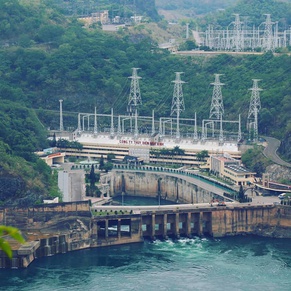 Hoa Binh Dam
Hoa Binh Dam
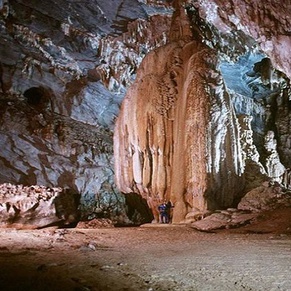 Tien Phi Cave
Tien Phi Cave
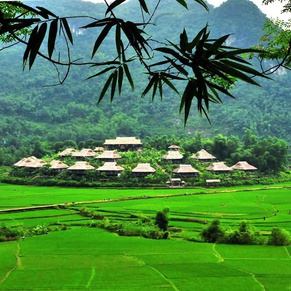 Mai Chau
Mai Chau
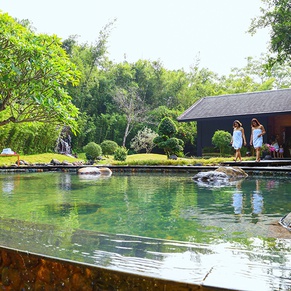 Kim Boi Hot Spring
Kim Boi Hot Spring
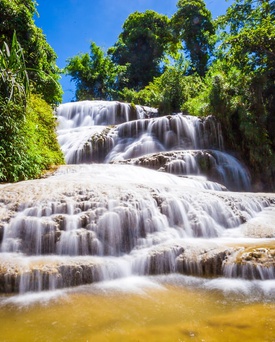 Hoa Binh in January
Hoa Binh in January
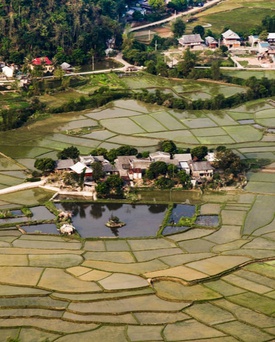 Hoa Binh in February
Hoa Binh in February
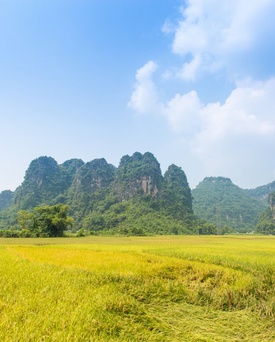 Hoa Binh in March
Hoa Binh in March
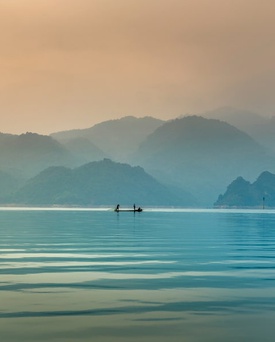 Hoa Binh in April
Hoa Binh in April
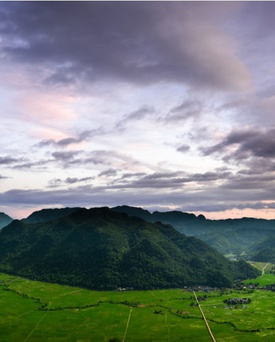 Hoa Binh in May
Hoa Binh in May
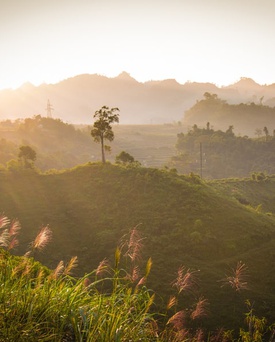 Hoa Binh in June
Hoa Binh in June
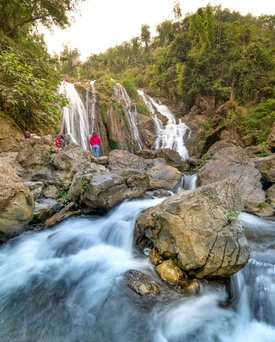 Hoa Binh in July
Hoa Binh in July
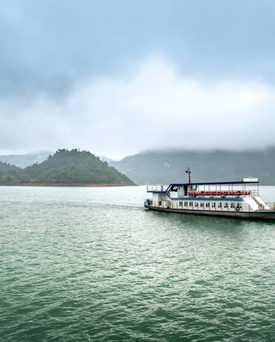 Hoa Binh in August
Hoa Binh in August
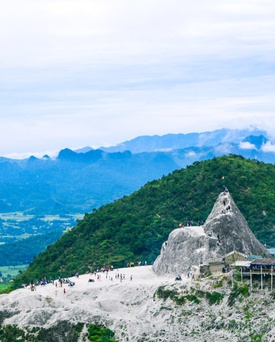 Hoa Binh in September
Hoa Binh in September
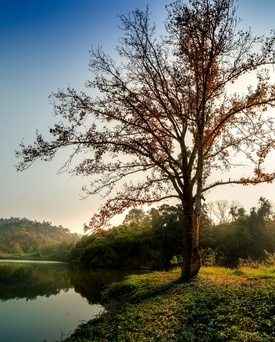 Hoa Binh in October
Hoa Binh in October
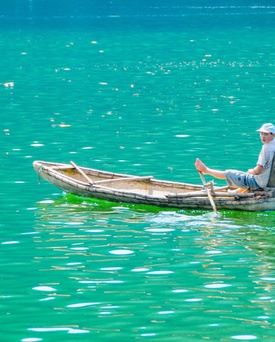 Hoa Binh in November
Hoa Binh in November
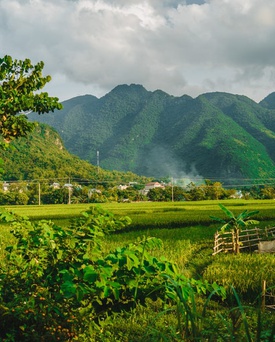 Hoa Binh in December
Hoa Binh in December
